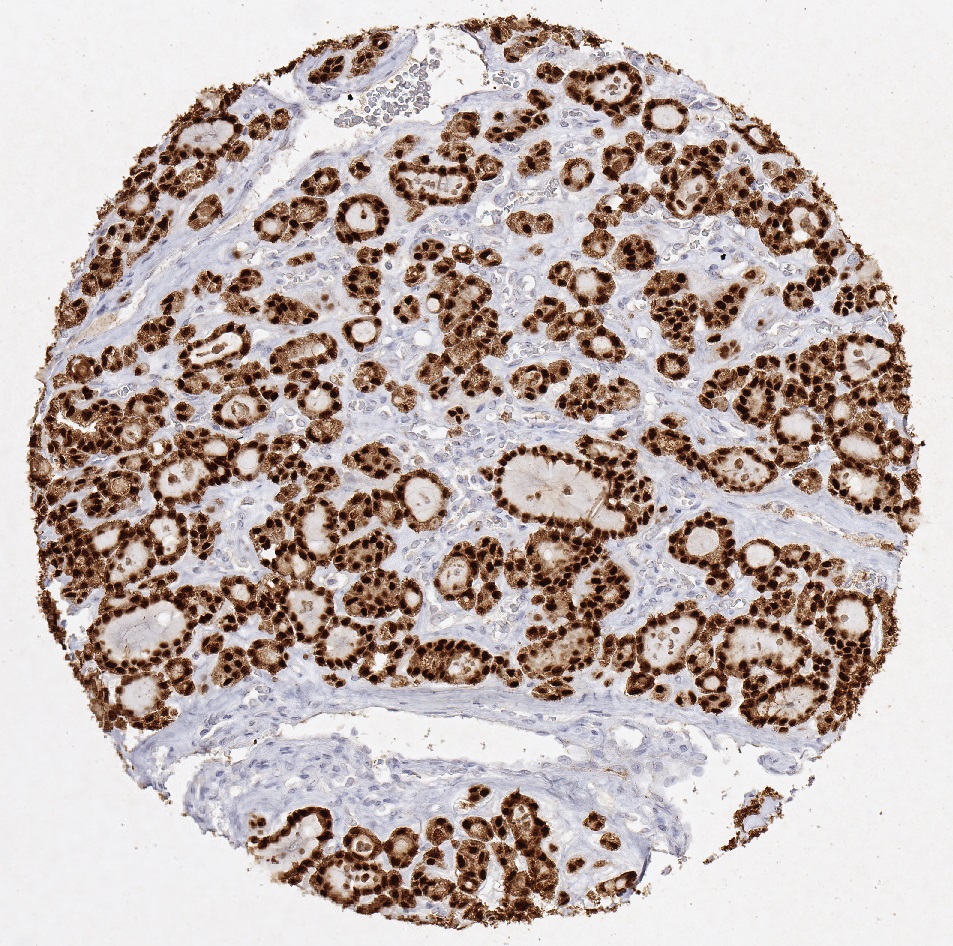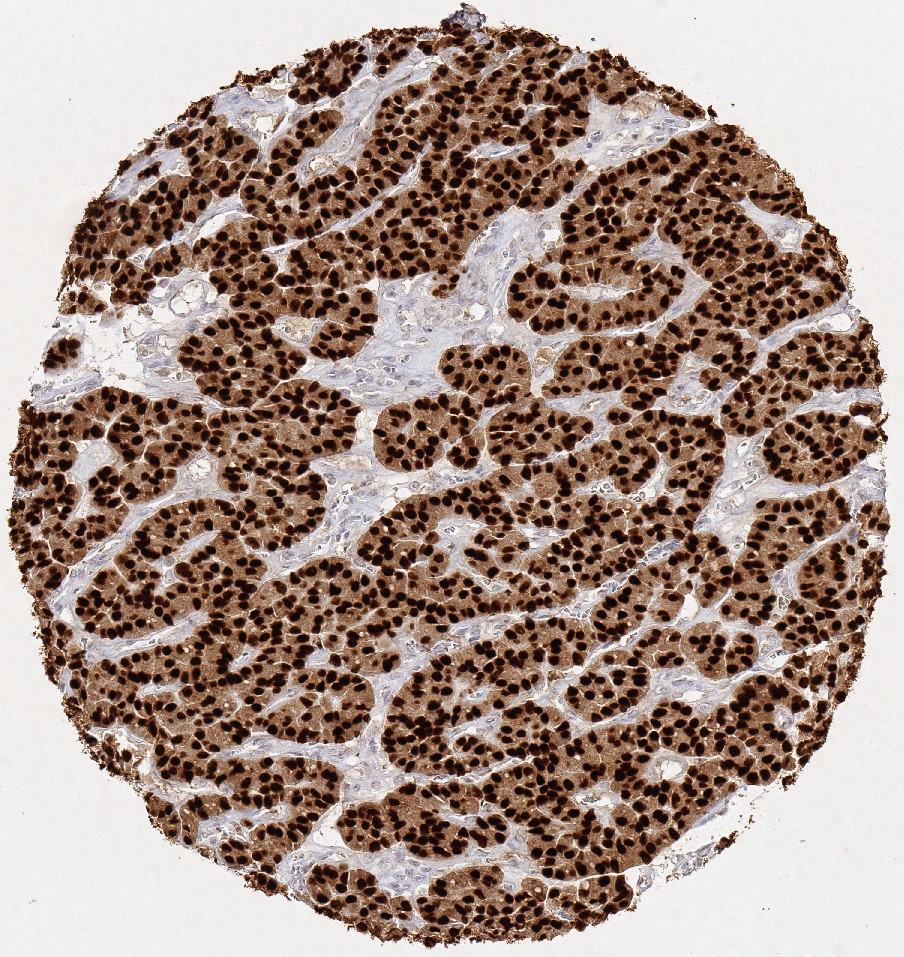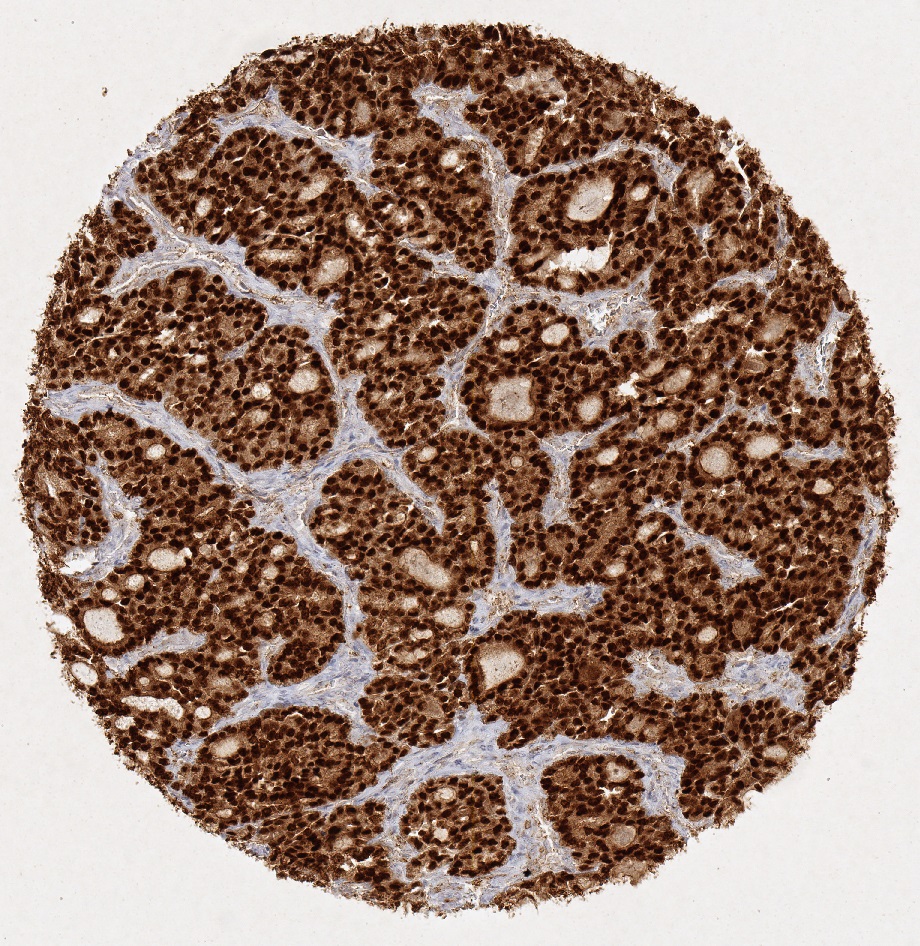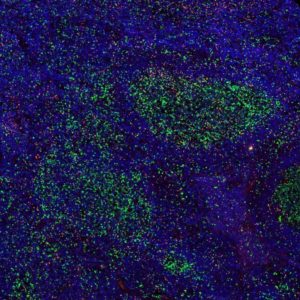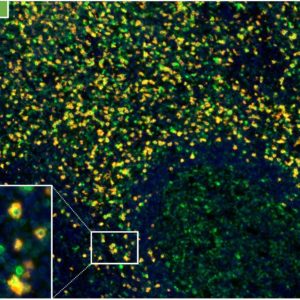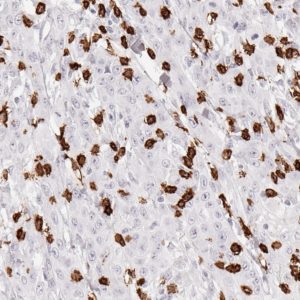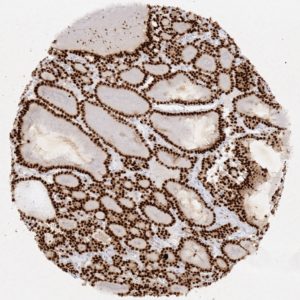Reactivity
Mouse monoclonal anti-PAX8 antibody clone JAX8 is suitable for the immunohistological detection of PAX8 in routine-fixed paraffin embedded tissue sections.
PAX8 is a member of the paired box (PAX) family of transcription factors involved the regulation of early development of the thyroid gland, kidney, and Müllerian tract. PAX8 plays a central role for the expression of thyroid-specific genes and thus, in development of thyroid follicular cells. Mutations in the PAX-8 gene are linked to thyroid follicular carcinomas. In the develop-ing kidney PAX8 is important for renal vesicle formation.
PAX8 is highly expressed in several neoplasms: Epithelial tumors of the thyroid and parathyroid glands, kidney, thymus, pan-creatic neuroendocrine tumors and female genital tract. Follicular and papillary thyroid carcinoma are almost always PAX8 positive (while medullary thyroid carcinoma is negative, but anaplastic carcinoma is positive in most cases). PAX8 is also found in almost all cases of endometrial carcinoma and ovarian serous, endometrioid, transitional and clear cell carcinoma. Moreover, PAX8 is found in most cases of renal cell carcinoma (all types) and in oncocytoma as well as in thymic tumours. Difefferent reports have shown that adenocarcinomas of lung and breast are negative for PAX8-expression. Also, PAX-8 is not found in the epithelial cells of the breast, lung, mesothelium, stomach, colon, pancreas.
PAX 8 is a useful IHC marker with a wide range of diagnostic applications and appears to be the most specific and sensitive marker for renal cell carcinoma and ovarian non-mucinous carcinoma.


